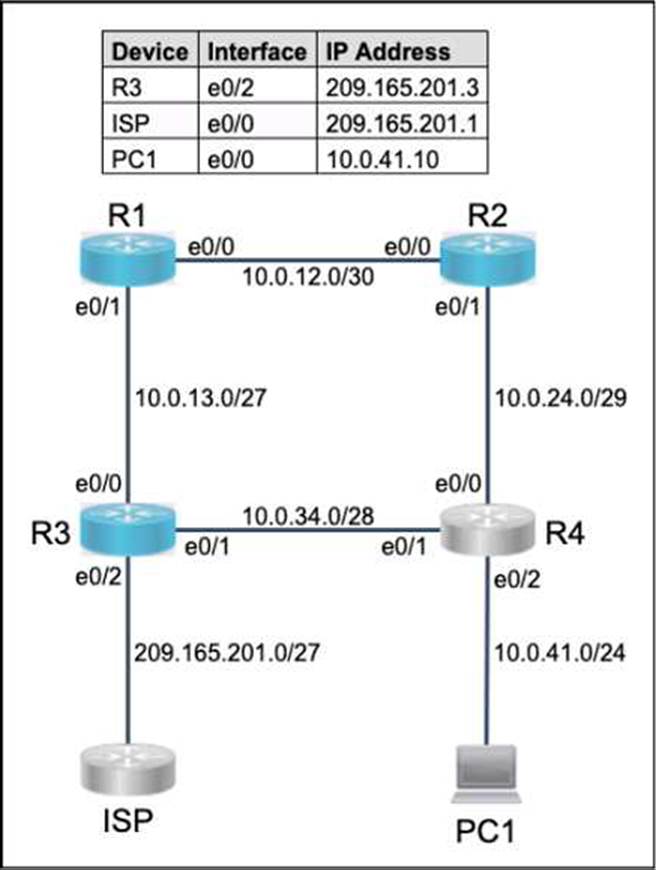Configure default routes on RI and R3 to the Internet using the least number of hops Guidelines
This is a lab item in which tasks will be performed on virtual devices.
• Refer to the Tasks tab to view the tasks for this lab item.
• Refer to the Topology tab to access the device console(s) and perform the tasks.
• Console access is available for all required devices by clicking the device icon or using the tab(s) above the console window.
• All necessary preconfigurations have been applied.
• Do not change the enable password or hostname for any device.
• Save your configurations to NVRAM before moving to the next item.
• Click Next at the bottom of the screen to submit this lab and move to the next question.
• When Next is clicked, the lab closes and cannot be reopened.

A. To configure static routing on R1 to ensure that it prefers the path through R2 to reach only PC1 on R4’s LAN, you need to create a static route for the host 10.0.0.100/8 with a next-hop address of 20.0.0.2, which is the IP address of R2’s interface connected to R1. You also need to assign a lower administrative distance (AD) to this route than the default AD of 1 for static routes, so that it has a higher preference over other possible routes. For example, you can use an AD of 10 for this route. To create this static route, you need to enter the following commands on R1’s console:
R1#configure terminal
R1(config)#ip route 10.0.0.100 255.0.0.0 20.0.0.2 10
R1(config)#end
To configure static routing on R1 that ensures that traffic sourced from R1 will take an alternate path through R3 to PC1 in the event of an outage along the primary path, you need to create another static route for the host 10.0.0.100/8 with a next-hop address of 40.0.0.2, which is the IP address of R3’s interface connected to R1. You also need to assign a higher AD to this route than the AD of the primary route, so that it has a lower preference and acts as a backup route. For example, you can use an AD of 20 for this route. This type of static route is also known as a floating static route. To create this static route, you need to enter the following commands on R1’s console:
R1#configure terminal
R1(config)#ip route 10.0.0.100 255.0.0.0 40.0.0.2 20
R1(config)#end
To configure default routes on R1 and R3 to the Internet using the least number of hops, you need to create a static route for the network 0.0.0.0/0 with a next-hop address of the ISP’s interface connected to each router respectively. A default route is a special type of static route that matches any destination address and is used when no other specific route is available. The ISP’s interface connected to R1 has an IP address of 10.0.0.4, and the ISP’s interface connected to R3 has an IP address of 50.0.0.4. To create these default routes, you need to enter the following commands on each router’s console:
On R1: R1#configure terminal
R1(config)#ip route 0.0.0.0 0.0.0.0 10.0.0.4
R1(config)#end
On R3: R3#configure terminal
R3(config)#ip route 0.0.0.0 0.0.0.0 50.0.0.4
R3(config)#end